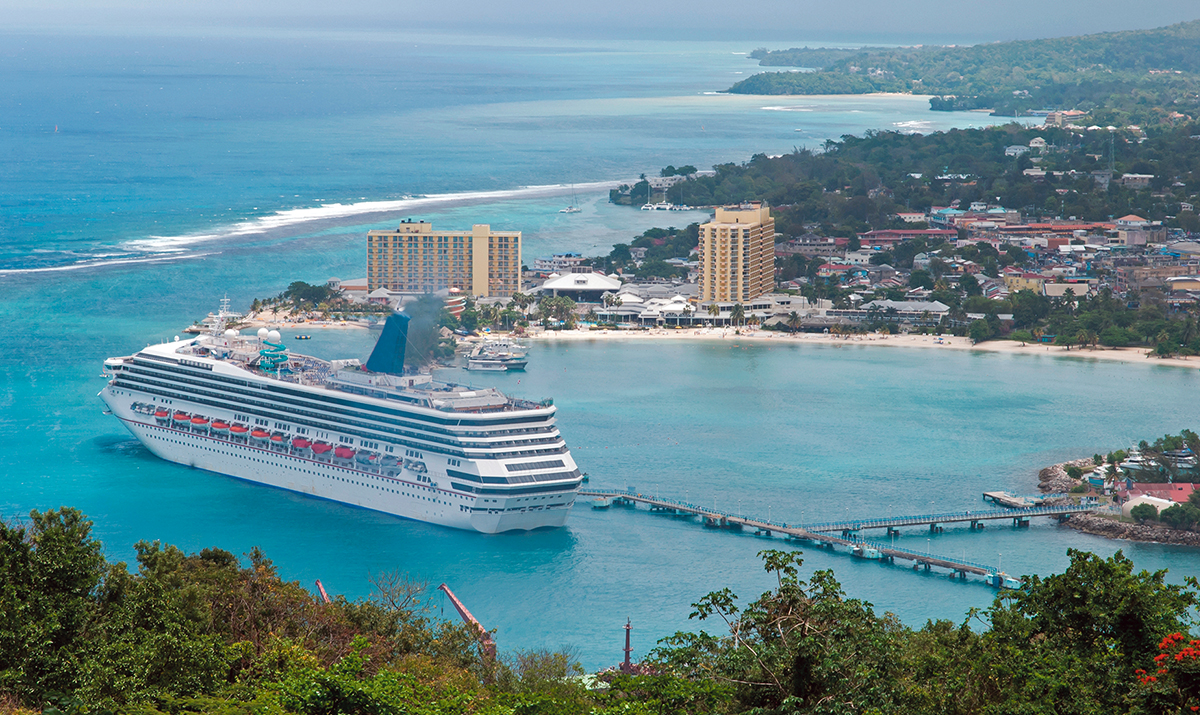
12 Sep Maritime masterclass
The Maritime Authority of Jamaica plays a key role in the nation’s shipping and trade sectors
For the past quarter of a century, the Maritime Authority of Jamaica (MAJ) has been a crucial actor in the development and expansion of the country’s shipping capacities, with its impressive work growing Jamaica’s reputation as a regional logistics hub.
As the primary organization for regulating and developing shipping activities onshore and offshore, the authority enables a regulatory environment that attracts investment and encourages it to be competitive, while also ensuring the highest standards in terms of safety, ocean pollution prevention and security. The MAJ also holds a coveted position on the Council of the International Maritime Organization. This seat at the top table ensures its presence at the tiller of the industry’s decarbonization drive.
Eager to transform Jamaica into a modern shipping center similar to Singapore and Rotterdam, the MAJ has recently adopted a sharp focus on bunkering, vessel repairs — through a new dry dock — and crewing operations. That latter goal is supported by the Caribbean Maritime University.
Great progress has been made, as shown by the first LNG bunkering operation in Jamaican waters earlier this year. The landmark loading of the low pollutant fuel was achieved at Kingston Freeport Terminal Limited in March. “We are proud to be able offer and promote LNG bunkering in Jamaica,” says Director General of the MAJ, Rear Admiral Peter Brady.
“Decarbonization of the shipping industry is critical and, being readily available today, LNG is a key part of the transition to cleaner marine fuels. This offering will not only grow local businesses but also encourage companies to embrace sustainable solutions,” he concludes.
Increasing port capacity
A significant expansion is planned to unlock the full potential of Reynold’s Pier
The port at Reynold’s Pier in Ocho Rios is set to undergo a major expansion that will allow the facility to respond to the increase in demand for aggregate by significantly increasing its capacity to facilitate the export of various grades of mineral.
Owned and operated by JBM, the mixed-use port receives cruise vessels, oil vessels, navy ships and cargo vessels while also facilitating small boat repairs on its dry dock, which is now under repair. However, its primary function is to export bulk cargo, with a specific focus on limestone. Historically the port exported large quantities of sugar but, as Donna Marie Howe explains, the primary focus is now on the aggregate market.
“Jamaica has numerous depositories of limestone that offer different qualities, such as high purity and construction grade. There is immense demand for this from several countries, including the US, and it’s a growing market in a multibillion-dollar industry,” she says. “We want to leverage this growing demand for good quality limestone and fully capitalize by further expanding the port. We plan to build a state-of-the-art facility that will significantly increase our capacity over time. Currently we are limited to 1.5 million tons per year, so the plan in the short term is to increase that to 2.5 million tons a year.
“We are looking to eventually increase the capacity up to 8 million tons a year. We are undertaking feasibility studies and if everything goes well it could be executed in the next 36 months, which would be a huge achievement.”
While the port will continue to berth navy vessels, welcome cruise lines and provide a range of services at the dry dock, the expansion plan focuses on the export side of the business. That is why JBM plans to construct a floating pier that will be able to receive much larger cargo vessels — including Panamax vessels which have a carrying capacity of 65,000 to 80,000 deadweight tons.
“We’re well positioned to unlock the full potential of the limestone market which would have an immediate impact on our nations GDP,” adds Howe. “The US are buyers of limestone and Jamaica has seen a real upsurge in demand from a number of developed countries.
“We are looking to work with the US market because that is where the demand for aggregate is coming from. They are upgrading their infrastructure and constructing more roads and we have no doubt that a big resource for these projects will be Jamaican limestone.
“There’s also interest from the Dominican Republic and Turks & Caicos, while we’re looking to enter the market in Guyana so we’re doing some due diligence to see if it is feasible to export there. There is high demand for limestone and we are seeing whether we can meet their needs. It may take some time but we want to ensure we can handle their demand.”
With aggressive medium-term plans to expand Reynold’s Pier and unearth new partnerships that increase the efficiency of operations, JBM aims to become an even more noteworthy contributor to international development. This will also be achieved through the repositioning and focus on the export of Brand Jamaica products that include limestone and high alkaline Ochi Spring Water, as well as being a conduit for the manufacturing industry.
